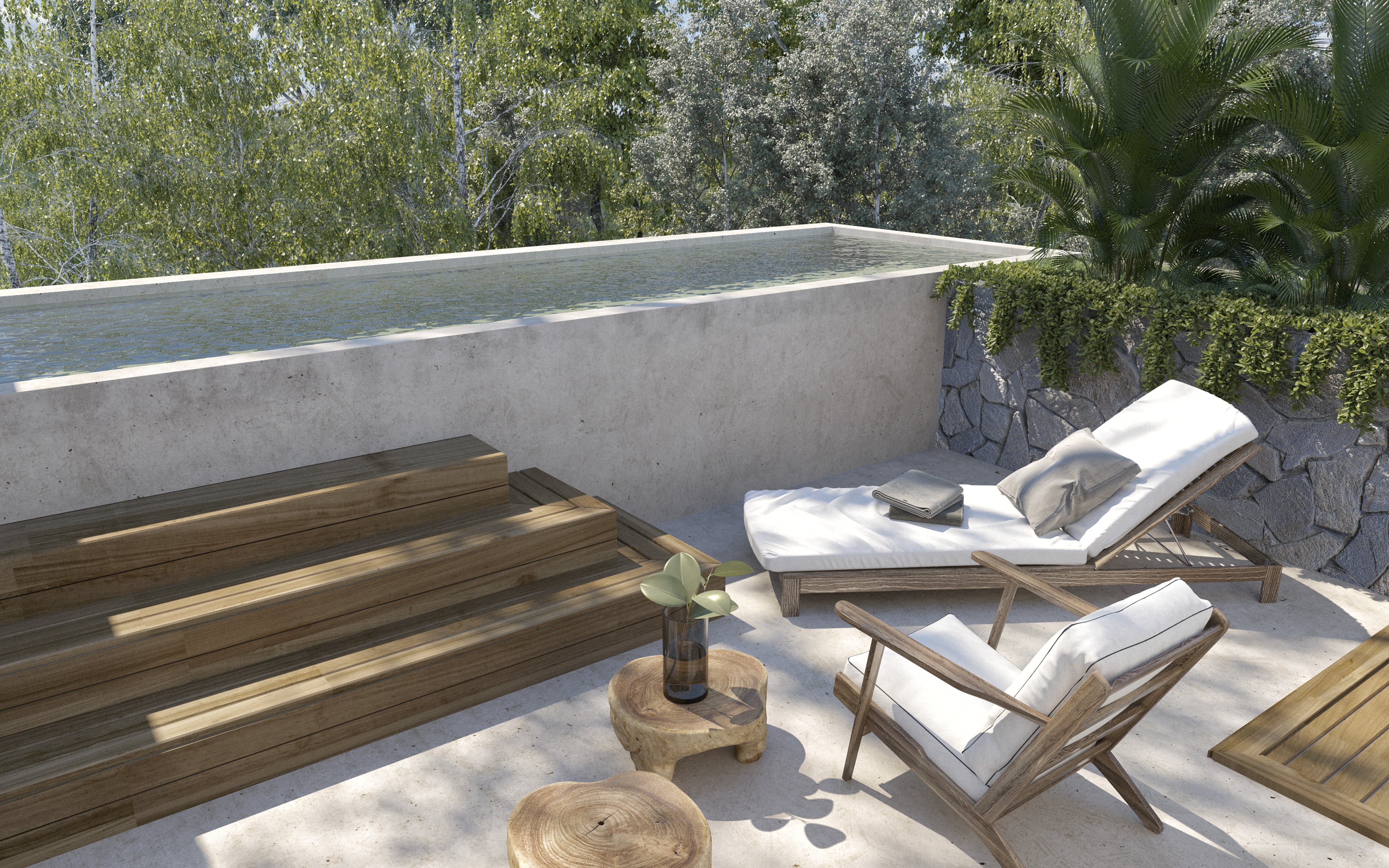SUSTAINABLE ARCHITECTURE IN TULUM: HARMONY BETWEEN URBANISM AND NATURE
Sustainable architecture, also called green, environmentally conscious, sustainable architecture, or eco-architecture, has a clear objective: to take advantage of natural resources so that the environmental impact caused by the construction of buildings is minimal.
Among its principles, it considers the climatic conditions, hydrography, and ecosystems of the environment in which buildings are constructed to obtain the maximum performance with the least impact. Likewise, it tries to maximize efficiency and moderation in using construction materials, privileging those with high ecological content.
Furthermore, it promotes a reduction in energy consumption for air conditioning, heating, cooling, and lighting, covering the rest of the demand with renewable energy sources and bio-climatic design without losing elegance, comfort, and design.
In the middle of the Mayan jungle and surrounded by the crystal-clear turquoise blue waters of the Caribbean, Tulum offers a natural, healthy, and exclusive lifestyle. Ideal for those who love the adventure of living amid a natural environment, with a lifestyle of respect for nature and care for physical, mental, and spiritual health.

Here, sustainable architecture plays a vital role in preserving and caring for the environment. Focused on respect for nature, the design and construction of the properties can carry materials such as wood, chukul, natural stones, ecological paints, bricks, and glass, among others. Along with implementing various active and passive water treatment and reuse technologies, the use of solar panels and architecture focused on the environment.
Advantages of sustainable architecture
Besides caring for the environment (reducing CO2 emissions, the greenhouse effect, global warming, and pollution), this type of architecture improves comfort and health with cooler, more ventilated homes with high natural lighting and systems that provide economic savings. Because by reducing energy consumption, the expenditure on air conditioning or light will also be lower.
On average, a building with bio-climatic architecture consumes 50% less energy than a conventional building. Also, the use of materials from the region supports local trade and the area’s economy.
Undoubtedly, Tulum is that paradisiacal corner to live, invest, or vacation embraced with nature, surrounded by the richness of its imposing culture and cosmopolitan lifestyle, unique in its kind.
